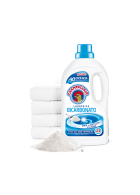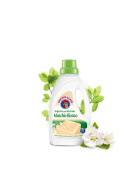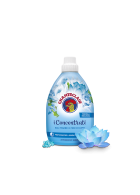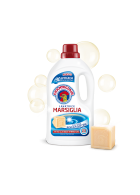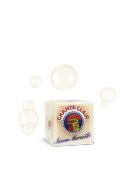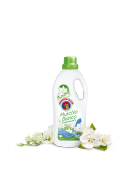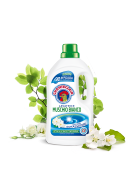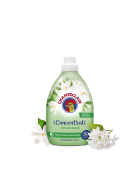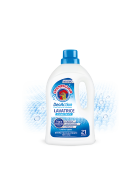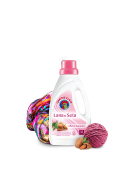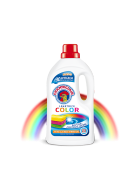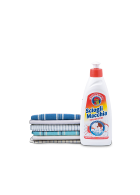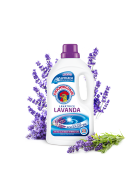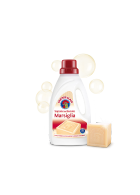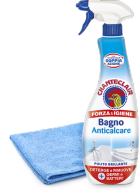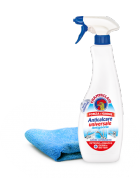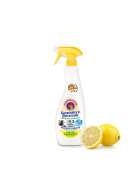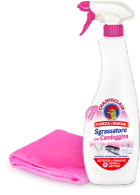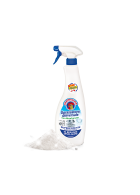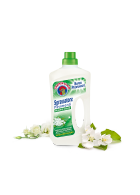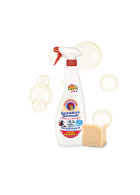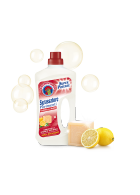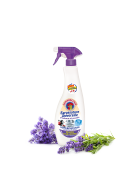
Cotton is a natural fibre mainly made of cellulose. We get it from the tropical plant of the same name. The cotton plant produces an oval-shaped fruit full of seeds that generates the cotton fibre used to spin the textile yarn since antiquity.
Cotton fibre is highly resistant to hot water and ironing. It is excellent at absorbing moisture and a good heat conductor. It also helps dissipate body heat. Some of the downsides to this fibre are its lack of elasticity and its tendency to shrink.
Cotton can be hand or machine washed. We recommend using fabric softener to help the fibres stretch. Drying in direct sunlight is not recommended because white cotton tends to yellow

Denim is a very sturdy type of cotton because of its diagonal weave. It is durable and easy to wash. Yarn-dying the warp with indigo gives denim its characteristic blue colour.
Denim was invented in the second half of the 1500s and was mainly used to manufacture work trousers for dockworkers. Contrary to common belief, blue jeans are not an American invention but come from the city of Genoa in Italy. The name “jeans” comes from the French name for Genoa, and from a contraction of the expression “bleu de Gênes” (meaning “blue from Genoa”), we get "blue jeans".
We highly recommend washing jeans in cold water, separately, with other jeans or with dark cotton clothing.
The wash programme should not be too long. Avoid long or intense spin cycles. It is best to use fabric softener to prevent the fibres from becoming stiff while drying.

Historically speaking, wool was the first natural fibre to be used for clothing. It is still one of the most important fibres today thanks to its remarkable ability to absorb moisture, its breathability and its insulating properties.
The most precious wool comes from Merino sheep. Other wool varieties, like mohair, cashmere, camel, vicuña, alpaca and llama, come from animals that live at high altitudes or in desert regions.
When machine washing, take care not to overload the machine to avoid crushing your clothing. Use a wool-specific laundry detergent and add fabric softener. Select a wool programme and set the temperature to 30°C at most.
Wool can handle a gentle spin cycle or be wrung out by hand. Finally, as soon as the wash is complete, dry flat.

Linen is a natural textile fibre from the herbaceous flax plant native to Egypt.
This fibre is extracted from the stem, which can grow up to one meter tall. The flax plant has a short-lived blue and pink flower. Linen is 70% cellulose. It is great for allergies, it absorbs moisture and it allows the skin to breathe.
Making it excellent for summer clothing, bed sheets, table cloths, bath towels and handkerchiefs. It is very resilient, especially when wet. It can be washed many times stay looking nice.
White linen clothing should be machine washed at 60°C, colours at lower temperatures and preferably on delicate cycles.

Microfibre is made by processing synthetic fibres with artificial ones. It is extremely thin and lightweight for complete comfort.
Microfibre provides maximum breathability and protection from the elements, so it is often used to make sportswear.
Microfibre clothing can typically be machine washed with a specific cycle at no more than 30°C, preferably in a mesh bag.
It is best not to use a lot of laundry detergent to avoid creating too many suds. Dry microfibre in a well-ventilated space away from direct sunlight.
If microfibre clothing is hung along the seams to avoid creases or, even better, on a hanger, it will not need ironing.

Silk is an animal fibre produced from the saliva of the silkworm, the larval form of a moth which only eats mulberry leaves.
Silk reflects light for unparalleled shine and easily absorbs dyes with a rich range of hues.
The elasticity of silk yarn makes for particularly resilient fabrics. Simple contact with the air keeps it fresh, even without ironing. Silk does not do well in sunlight and is easily stained by sweat. It is hypo-allergenic and helps to regulate body temperature.
We highly recommend dry cleaning silk clothing. When washing in water, before soaking the garment, check for colour fastness by wetting one corner.
Wash silk in lukewarm water with a neutral soap or special detergent. Use a small amount of fabric softener. Please be gentle when rubbing or wringing out silk clothing. Rinse with lukewarm water and hang to dry in a well-ventilated place away from heat sources. Iron on a very low setting.

Velvet is an elegant and exquisite fabric that is particularly comfortable because it is soft and pleasant to touch. It is mostly used to make clothing, rugs and upholstery.
Velvet can be made with cotton, silk or synthetic fibres. It is important to wash each type of velvet according to its specific requirements. Cotton and silk fare best in a delicate wash or when dry cleaned,
while synthetic fibres can be hand washed in lukewarm water, preferably with a gentle laundry detergent.
It is important to remove stains immediately to prevent them from penetrating into the fabric.
To dry velvet, we recommend hanging items with care to avoid wrinkles and marks. Once dry, brush gently. It is best not to iron velvet. Instead, use a clothes steamer when needed.

Lace is made by working thread in a particular way to achieve a light, delicate and ornate fabric. Lace was invented in the second half of the 1500s in Venice and Flanders before spreading to many other countries.
There are many different kinds of lace. It can be made by hand, using a machine or using bobbins — braiding between 4 and 400 lengths of thread together to make a pattern held in place by pins stuck into a pillow.
This fabric has always been fashionable and elegant, used to create formal dress and clothing for informal and everyday occasions. Lace is very delicate, so it needs to be treated with great care.
Always wash using a dedicate cycle or preferably by hand. The embroidery can break during intense washes and can dry out or burn if ironed at the wrong temperature. Always dry away from heat sources and in the correct shape.

Cleaning the bathroom should be a daily activity to ensure the utmost hygiene for all surfaces and to remove the germs and bacteria that are often found in this room.
Choose disinfectant cleaners that guarantee reliable results, including on the floor.
To clean taps, mirrors and cabinets, choose formula-specific products with anti-limescale properties to make the whole bathroom shine with just the swipe of a sponge. Don’t forget to wash the shower curtain every so often to prevent mildew!

The kitchen is where the whole family comes together. Daily cleaning is also essential here because the kitchen is where meals are prepared and eaten.
The golden rule is to wash the stove, table and sink after each use. Once a week, remember to clean the rubbish bin, lighting fixtures, floor, windows and furniture. At least once a month, clean the fridge and oven with a disinfectant.

The living room is the place for relaxing! That’s why it’s so important to make sure it is a comfortable environment.
Tidy up cushions, blankets and newspapers every day. Be sure to dust and clean the floors every week. Clean the couch with a damp cloth.
Every so often, use specific products to wash curtains and clean the rugs or carpet. Don’t forget to water the plants and clean the remote control (the dirtiest object in the whole house)!

Your bedroom is the area of the house where you spend most of your time. That’s why it’s so important to keep it clean and especially to dust it properly to avoid annoying itching or allergies caused by dust mites that can live in mattresses and bedding.
Remember to open the windows daily for fresh air. Change the bedding and covers every week. Vacuum and clean the floor every three days.
When cleaning children’s bedrooms, opt for gentle products that are specially formulated to be gentle on skin.

Some time should be spent each month cleaning the garage.
It’s very important to dust shelves and wardrobes. Hang up any items that are seldom used. Sweep the floor with a broom, and then clean with a wet cloth to remove tyre marks left by cars. To remove tougher stains use, extra-strength cleaners.


